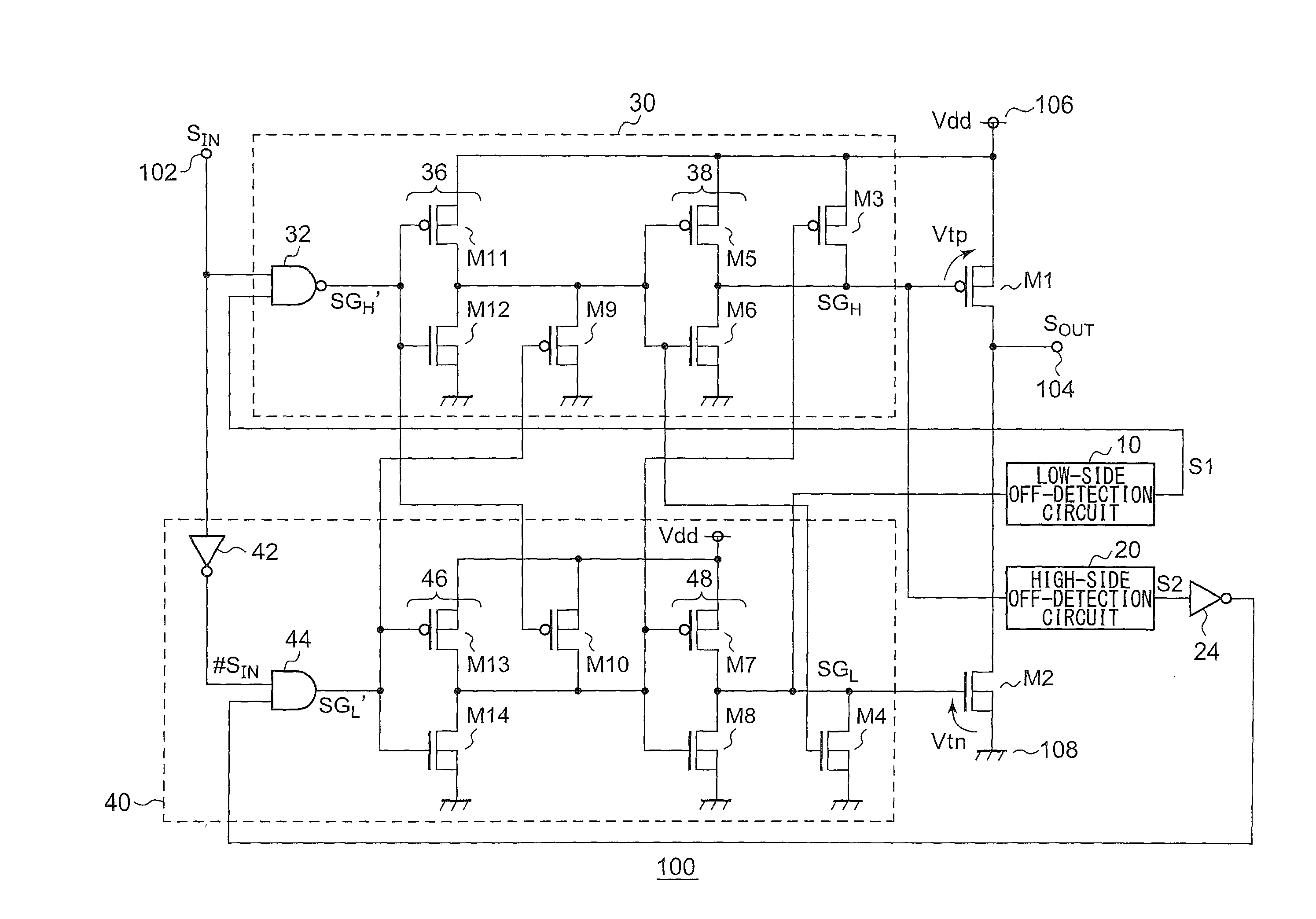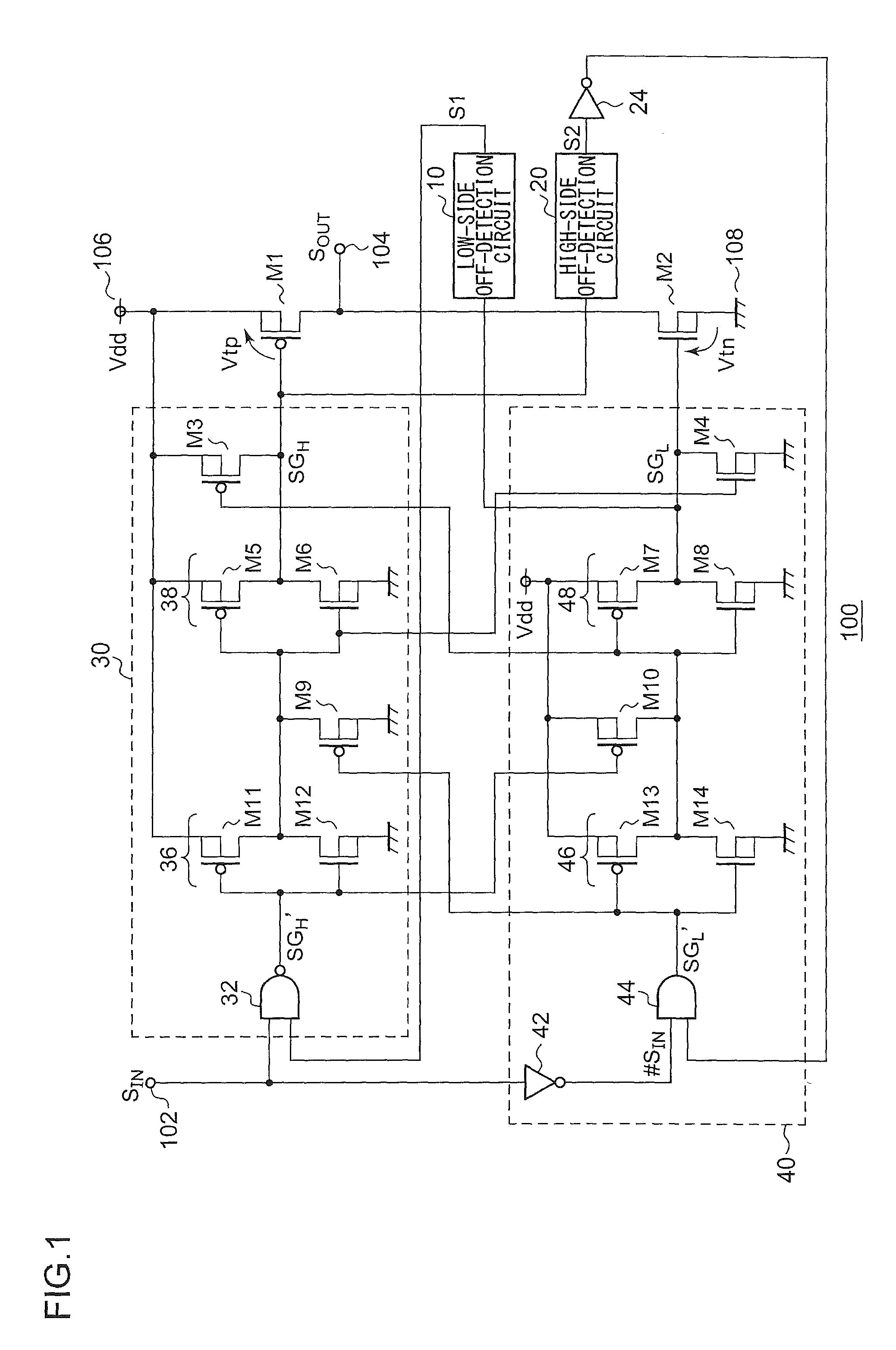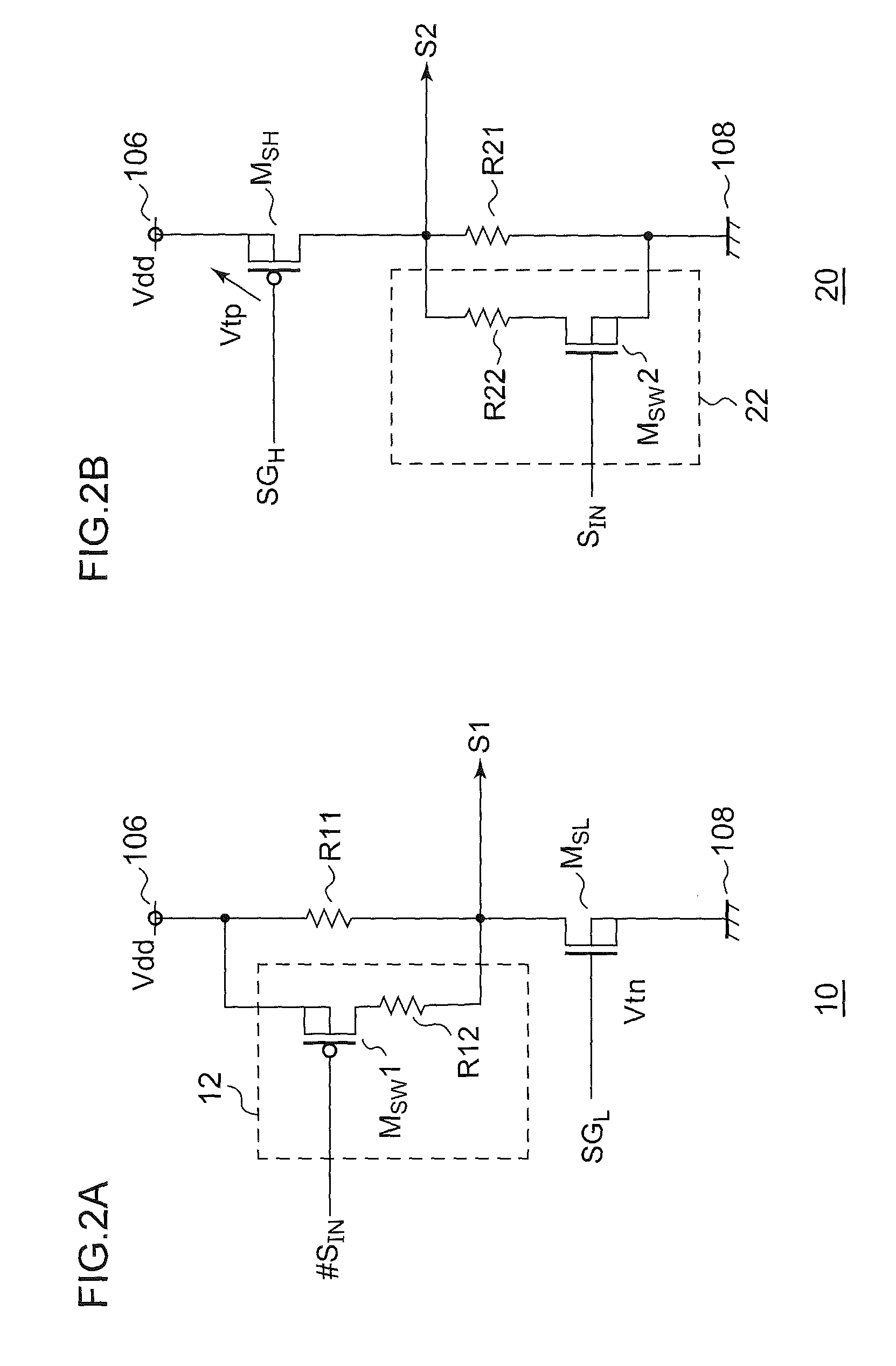Output circuit
a technology of output circuit and output circuit, which is applied in the direction of pulse technique, power conversion system, oscillation generator, etc., can solve the problems of reducing switching speed, reducing energy efficiency, and reducing the response speed of bridge circuits
- Summary
- Abstract
- Description
- Claims
- Application Information
AI Technical Summary
Benefits of technology
Problems solved by technology
Method used
Image
Examples
first embodiment
[First Embodiment]
[0061]FIG. 1 is a circuit diagram which shows a configuration of a bridge output circuit 100 according to a first embodiment. The bridge output circuit 100 receives a control signal SIN via an input terminal 102, and outputs, via an output terminal 104, an output signal SOUT having a voltage level that corresponds to the level of the control signal SIN. With the present embodiment, when the control signal SIN is high level, the output signal SOUT is set to the power supply voltage Vdd, and when the control signal SIN is low level, the output signal SOUT is set to the ground voltage (0 V).
[0062]The bridge circuit 100 includes a high-side transistor M1, a low-side transistor M2, a low-side off-detection circuit 10, a high-side off-detection circuit 20, a high-side driver 30, and a low-side driver 40.
[0063]The high-side transistor M1 is arranged between a first fixed voltage terminal (power supply terminal 106) and the output terminal 104. The low-side transistor M2 i...
second embodiment
[Second Embodiment]
[0140]FIG. 8 is a circuit diagram which shows a configuration of an output circuit 100 according to a second embodiment. Via its output terminal POUT, the output circuit 100 outputs either the power supply voltage Vdd or another voltage (e.g., ground voltage) that differs from the power supply voltage Vdd, according to the levels of an on-control signal SON and an off-control signal SOFF. The output circuit 100 is a portion of a half-bridge circuit, a portion of an H-bridge circuit, or a portion of a source follower circuit.
[0141]The output circuit 100 includes: an output power transistor (which will simply be referred to as the “output transistor” hereafter) M1, a first resistor R1, a first ON circuit 110, a second ON circuit 120, an OFF circuit 130, a first clamp circuit 140, and a second clamp circuit 142. The circuit portion of the bridge output circuit 100, with the exception of the high-side transistor M1, will be referred to as a “high-side driver 30c”.
[01...
PUM
 Login to View More
Login to View More Abstract
Description
Claims
Application Information
 Login to View More
Login to View More - R&D
- Intellectual Property
- Life Sciences
- Materials
- Tech Scout
- Unparalleled Data Quality
- Higher Quality Content
- 60% Fewer Hallucinations
Browse by: Latest US Patents, China's latest patents, Technical Efficacy Thesaurus, Application Domain, Technology Topic, Popular Technical Reports.
© 2025 PatSnap. All rights reserved.Legal|Privacy policy|Modern Slavery Act Transparency Statement|Sitemap|About US| Contact US: help@patsnap.com



